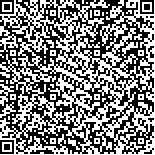| 摘要: |
| [摘要] 目的 分析全胸腔镜手术治疗左心瓣膜术后单纯性重度三尖瓣关闭不全的围术期结果,探讨全胸腔镜手术在再次三尖瓣手术中的优势及临床效果。方法 回顾性收集2018年1月至2023年12月在解放军总医院第一医学中心心脏大血管外科接受全胸腔镜三尖瓣手术治疗的左心瓣膜术后单纯性重度三尖瓣关闭不全患者的临床资料。共计134例患者符合标准纳入研究,总结其围术期临床资料以及治疗经验。其中72例(53.7%)患者行三尖瓣成形术(三尖瓣成形组),62例(46.3%)患者行三尖瓣置换术(三尖瓣置换组),比较两组相关指标。结果 134例患者体外循环中位时间为92 min,平均手术时间为(183.8±56.1)min。2例(1.5%)患者体外循环撤机后出现右心功能不全,后予以体外膜肺氧合支持,于术后1周内顺利撤机。术中输注血制品54例(40.3%)。术后患者呼吸机辅助通气中位时间为13.0 h。重症监护室(ICU)停留中位时间为2.0 d,引流管拔除中位时间为2.0 d,术后胸腔引流量中位数为475.0 mL。16例患者出现术后早期并发症,包括室颤2例,胸腔积液4例,住院再手术2例,起搏器植入8例。无术后早期死亡。三尖瓣成形组肺动脉压、术前房颤占比低于三尖瓣置换组,差异有统计学意义(P<0.05)。三尖瓣成形组手术时间、术后机械通气时间、ICU停留时间短于三尖瓣置换组,术中输血浆量、术后引流量、术后右心房内径、术后右心室舒张末期内径、左心房内径、术后并发症发生率低于三尖瓣置换组,差异有统计学意义(P<0.05)。两组患者体外循环时间、术中输血率、引流管拔除时间、术后左心室舒张末期内径、术后左心室射血分数、术后次日肌钙蛋白T、术后次日肌酸激酶同工酶MB、人工心脏辅助装置(包括体外膜肺氧合和主动脉内球囊反搏)使用率等差异无统计学意义(P>0.05)。结论 全胸腔镜体外循环下不停跳三尖瓣手术具有手术创伤小、术后恢复快等优点。对于满足手术指征的患者,尽早手术可能有更高概率接受三尖瓣成形术和获得更好的围术期结果。 |
| 关键词: 三尖瓣关闭不全 胸腔镜手术 再手术 |
| DOI:10.3969/j.issn.1674-3806.2024.03.03 |
| 分类号:R 654.2 |
| 基金项目:解放军总医院青年自主创新科学基金-扶持项目(编号:22QNFC050) |
|
| Minimally invasive treatment scheme of isolated tricuspid valve insufficiency after left heart valve surgery and the perioperative results |
|
SHEN Hong1, HE Xiaoyi1,2, JIANG Shengli1,2
|
|
1.Chinese PLA Medical School, Beijing 100853, China; 2.Department of Cardiovascular Surgery, First Medical Center, Chinese PLA General Hospital, Beijing 100853, China
|
| Abstract: |
| [Abstract] Objective To analyze the perioperative results of severe isolated tricuspid valve insufficiency after total thoracoscopic surgery treatment for left heart valve, and to explore the advantages and clinical effects of total thoracoscopic surgery on reoperation for tricuspid valve. Methods The clinical data of patients with severe isolated tricuspid valve insufficiency after left heart valve surgery who received total thoracoscopic surgery treatment of tricuspid valve in Department of Cardiovascular Surgery, First Medical Center, Chinese PLA General Hospital from January 2018 to December 2023 were retrospectively collected. A total of 134 patients who met the inclusion criteria were included in this study, and their perioperative clinical data and treatment experience were summarized. Among the patients, 72 cases(53.7%) underwent tricuspid valvuloplasty(tricuspid valvuloplasty group) and 62 cases(46.3%) underwent tricuspid valve replacement(tricuspid valve replacement group). The relevant indicators were compared between the two groups. Results The median time of cardiopulmonary bypass(CPB) in the 134 patients was 92 minutes and the mean operation time was (183.8±56.1)minutes. Two cases(1.5%) had right heart dysfunction after CPB weaning, and received extracorporeal membrane oxygenation(ECMO) support. The weaning was successful within 1 week after surgery. Blood products were transfused in 54 cases(40.3%). After surgery, the median time of ventilator-assisted ventilation was 13.0 hours. The median length of stay in the intensive care unit(ICU) was 2.0 days, and the median time of drainage tube removal was 2.0 days, and the median postoperative thoracic drainage volume was 475.0 mL. Early postoperative complications occurred in 16 cases including ventricular fibrillation in 2 cases, pleural effusion in 4 cases, admission for reoperation in 2 cases and pacemaker implantation in 8 cases. There was no early postoperative death. The pulmonary artery pressure, and the proportion of preoperative atrial fibrillation in the tricuspid valvuloplasty group were lower than those in the tricuspid valve replacement group, and the differences were statistically significant(P<0.05). The operation time, intraoperative plasma transfusion volume, postoperative mechanical ventilation time, length of stay in ICU, postoperative drainage volume, postoperative right atrial diameter, right ventricular end-diastolic diameter, left atrial diameter and the proportion of postoperative complications in the tricuspid valvuloplasty group were lower than those in the tricuspid valve replacement group, and the differences were statistically significant(P<0.05). There were no significant differences in the duration of CPB, intraoperative blood transfusion rate, drainage tube removal time, postoperative left ventricular end-diastolic diameter, postoperative left ventricular ejection fraction, cardiac troponin T on the second day after surgery, creatine kinase isoenzyme MB on the second day after surgery, and the utilization rates of artificial heart assistance devices(including ECMO and intra-aortic balloon pump) between the two groups(P>0.05). Conclusion CPB with beating-heart for tricuspid valve surgery under total thoracoscopy has the advantages of minimal surgical trauma and quick postoperative recovery. For patients who meet the indications for the surgery, early surgery may lead to a higher probability of receiving tricuspid valvuloplasty and better perioperative outcomes. |
| Key words: Tricuspid valve insufficiency Thoracoscopic surgery Reoperation |

